MLA - Innovations in Meat Processing
Bandsaw safety solution – BladeStop
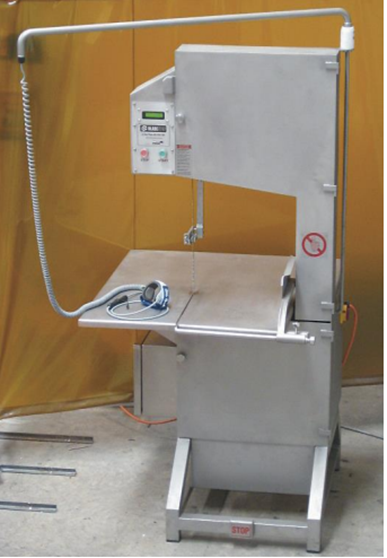 BladeStop has been developed by Scott Automation and Robotics (SAR) in partnership with Meat and Livestock Australia (MLA). The technology is designed to monitor operator interaction with bandsaws and stop the saw blade before there is opportunity for significant harm to the operator. The technology implements a layer of safety to the dangerous bandsaw tasks performed in processing plants and butcher shops throughout Australia and the rest of the world.
BladeStop has been developed by Scott Automation and Robotics (SAR) in partnership with Meat and Livestock Australia (MLA). The technology is designed to monitor operator interaction with bandsaws and stop the saw blade before there is opportunity for significant harm to the operator. The technology implements a layer of safety to the dangerous bandsaw tasks performed in processing plants and butcher shops throughout Australia and the rest of the world.
MLA’s investments over a five-year period to bring this technology to market has delivered impactful outcomes in safety for workers in meat processing as well as industry benefits. It reduces the economic and social effects that result from serious workplace injuries and provides an even safer work environment to help attract and retain staff to the meat processing industry.
The technology has now passed the 1,000 units worldwide milestone and is brining huge safety benefits for workers in processing plants across 25 countries. BladeStop in designed and manufactured in Australia.
BladeStop Final reports:
MEQ Probe – Real-time meat eating quality probe: Technology refinement and commercialisation
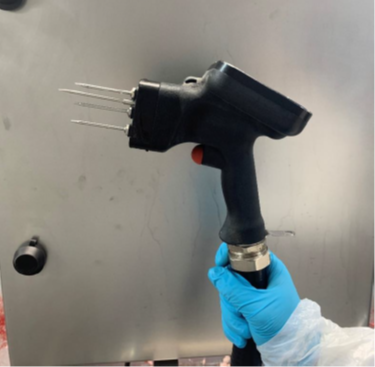 MLA supported MEQ Probe to develop their technology to achieve an industry applicable accuracy and precision tool to estimate intramuscular fat (IMF) percent in lamb and marble score in beef. In both species this was achieved in hot carcases thereby enabling new quality grading and processing efficiencies, and enhanced feedback to producers.
MLA supported MEQ Probe to develop their technology to achieve an industry applicable accuracy and precision tool to estimate intramuscular fat (IMF) percent in lamb and marble score in beef. In both species this was achieved in hot carcases thereby enabling new quality grading and processing efficiencies, and enhanced feedback to producers.
MEQ Probe has built a system that has demonstrated it can be used in a commercial processing environment and operate at chain speed. The technology has achieved commercially acceptable accuracy and functionality. The Australian Meat Industry Language and Standards Committee has granted conditional AUS-MEAT accreditation to measure IMF% in hot lamb carcases and MSA marble score in hot beef carcases.
MLA continues to support MEQ Probe to improve their estimations of IMF% and marble score, prepare for future accreditation trails and investigate potential for additional traits. Additionally, MLA is currently supporting multiple processors and MEQ Probe to facilitate the adoption of the technology in-plant.
IMF Fat Sensor – Prototype Single-sided Nuclear Magnetic Resonance for non-destructive IMF measurement
Intramuscular fat (IMF) is known to be a key component of eating quality. A cuts-based MSA sheepmeat model has been developed but requires measurement of IMF% at processing line speed to enable industry implementation. This project developed, tested and delivered positive proof-of-concept that a Nuclear Magnetic Resonance (NMR) configuration suitable to use on uncut lamb carcases has shown potential to provide this measurement.
A prototype single-sided NMR sensor has been designed, built and tested for use in non-destructive IMF measurements in lamb. The sensor has been shown to be able to predict IMF. In other work, the system has been proven to accurately measure IMF in beef with correlations for hot and cold applications. Notably, it was found that hot carcases will be easier and more accurate to measure than chilled carcases.
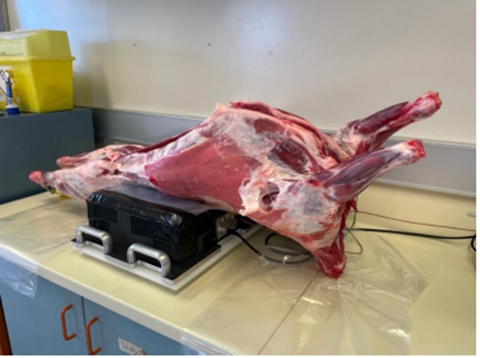 This project has delivered proof-of-concept that a single-side NMR design can be used to measure IMF% in uncut carcases. Future research should focus on development and testing of a pre-commercial prototype in commercial processing conditions. MLA is continuing to support the NMR technology developer, inMR Pty Ltd to further develop their NMR sensor.
This project has delivered proof-of-concept that a single-side NMR design can be used to measure IMF% in uncut carcases. Future research should focus on development and testing of a pre-commercial prototype in commercial processing conditions. MLA is continuing to support the NMR technology developer, inMR Pty Ltd to further develop their NMR sensor.
Hand-held Veritide BluLine scanner
Faecal contamination during the slaughter process remains one of the major contributors to bacterial contamination in red meat. The primary aim of this project was to validate a new real-time technology to understand how faecal detection can be used to reduce pathogenic contamination, increase the shelf-life of red meat and increase the profitability of a carcase. The reduction in trim value through reputational damage is directly linked to the level of contamination recorded in carcases. Therefore, lowering the level of contamination will lower the cost to the processor.
The Veritide faecal detection system was able to detect areas of non-visual contamination, which led to proactive intervention, reducing the bacterial load on a carcase entering the chiller following processing. Trimming of the identified contaminated areas using the Veritide scanners reduced the bacterial load. This confirmed that the Veritide faecal detection system could positively impact the shelf-life of the final product.
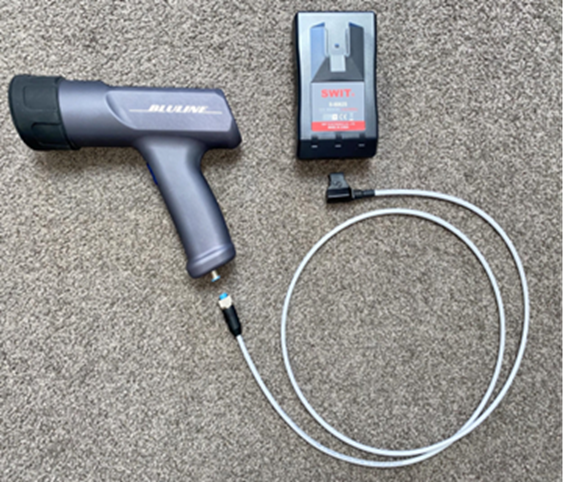 The detection of contaminated areas of a carcase is likely to lead to improvements in food safety assurance and shelf-life for manufacturing beef and specific primal cuts. It is recommended that due to financial benefits and increased hygiene, the industry moves to invest in the commercialisation of the system, particularly in processing plants that do not use pre-slaughter washing. MLA is reviewing options to expand the technology beyond the manual user interface application as well as facilitating the adoption of the technology in processing plants.
The detection of contaminated areas of a carcase is likely to lead to improvements in food safety assurance and shelf-life for manufacturing beef and specific primal cuts. It is recommended that due to financial benefits and increased hygiene, the industry moves to invest in the commercialisation of the system, particularly in processing plants that do not use pre-slaughter washing. MLA is reviewing options to expand the technology beyond the manual user interface application as well as facilitating the adoption of the technology in processing plants.
DTS Microwave stun – Wagstaff
MLA has a long portfolio of investments into microwave stunning systems. The most recent being a dielectric (microwave) stunning system developed by Wagstaff Food Service Pty Ltd and Advanced Microwave Technologies. Previous research has demonstrated using a small number of animals, that insensibility can be successfully induced in cattle, using Diathermic Syncope (DTS). This project will validate these outcomes in a larger number of animals, demonstrating repeatability, at a pace more suited to a commercial processing situation. Electroencephalogram (EEG) assessment will be utilised on a subset of animals processed to confirm insensibility.
An outcome of the work will be to have the Victorian Department progress the matter to the national Animal Welfare Task Group (AWTG), submitting a paper to AWTG seeking recognition that “DTS Diathermic Syncope” (the process) constitutes a humane stunning method.
This project confirms pilot study outcomes in a larger number of cattle and explores the animal handling infrastructure and energy and power input parameters that would be suited to a commercial processing situation. Two hundred and thirty-four cattle with a range of age, sex and bodyweights, including heavy bulls and Brahman-type animals, were successfully stunned on first application of DTS. Live observations indicated that DTS consistently induces insensibility, with no vocalisation, no evidence of pain or distress, and EEG data confirmed the development of a high-amplitude-low-frequency (HALF) epileptiform state. The animal stunned using DTS can also return to consciousness, so this method of stunning is likely to be acceptable to the Halal and possibly Kosher markets.
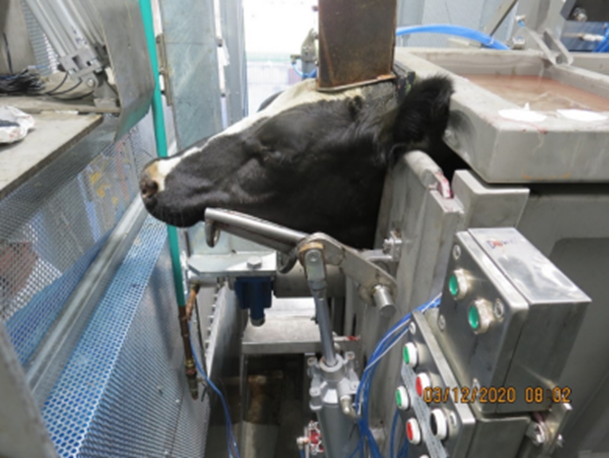 DTS is an effective means of inducing insensibility in cattle, with a duration of insensibility suited to exsanguination using the Halal cut. There are multiple key parameters that are likely to be viewed favourably when compared against the current stunning methods. If deemed acceptable by the Halal and Kosher markets, this technology could provide a solution to the current debate in Europe around banning the use of non-stunned (ritual) slaughter. MLA has entered into an agreement with Wagstaff Food Service Pty Ltd to help facilitate the commercialisation of the technology to assist its adoption in the Australian red meat industry.
DTS is an effective means of inducing insensibility in cattle, with a duration of insensibility suited to exsanguination using the Halal cut. There are multiple key parameters that are likely to be viewed favourably when compared against the current stunning methods. If deemed acceptable by the Halal and Kosher markets, this technology could provide a solution to the current debate in Europe around banning the use of non-stunned (ritual) slaughter. MLA has entered into an agreement with Wagstaff Food Service Pty Ltd to help facilitate the commercialisation of the technology to assist its adoption in the Australian red meat industry.
Other DTS MLA Investments:
Advanced Livestock Measurement Technologies (ALMTech) program and the carcase vale calculator
Historically, lean meat yield (LMY) and eating quality (EQ) have been difficult traits to measure in the beef, pork and lamb industries. LMY is commonly estimated from simple tissue depth measures in beef and lamb.
Accurate measurements of LMY and EQ enable the industry to be responsive to market demands, while minimising value-chain wastage. The ALMTech I program of work has created significant productivity and profitability improvements for primary producers by executing 70 sub-programs of work. This program of work related to objective measurement, creates a discounted net benefit of $383 million for the collective industries, with an estimated benefit cost ratio of 4:1. The coordination of calibration and validation testing across common groups of genetically-defined animals enables transparent comparison between technologies, and the seamless integration of their measurements into new or enhanced genetic tools and industry feedback systems.
Developed as a component of the ALMTech I, the beef and lamb carcase value calculators have been developed to estimate the gross profitability of carcases. This Excel-based carcase calculator uses currently available (and evolving) carcase grading inputs to predict the weight of commercial cuts specified by the user, as defined by their end market specifications. This, coupled with price/kg and costs, enables the processor to determine the value of the carcase depending on what cutting/boning end market specifications are available for each carcase for the processor’s supply chain.
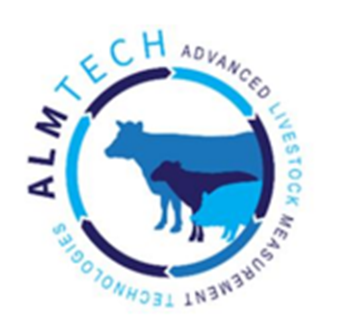 In the immediate future, industry will require continued support to adopt and make best use of the new measurement technologies and for ongoing auditing and calibration testing. MLA led a successful application for a second Rural R&D for Profit grant, which provides the ALMTech RD&A program an additional three years of funding through to June 2023.
In the immediate future, industry will require continued support to adopt and make best use of the new measurement technologies and for ongoing auditing and calibration testing. MLA led a successful application for a second Rural R&D for Profit grant, which provides the ALMTech RD&A program an additional three years of funding through to June 2023.


